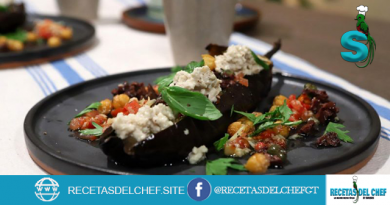Keto Desserts: Sweetness Without Guilt
Entering the ketogenic diet presents its challenges, especially when the goal is to satisfy the palate without straying from the path marked by this dietary regimen. The key lies in a careful selection of ingredients and techniques that allow us to recreate the sweet delights we are accustomed to, but with a healthy twist that aligns with our nutritional goals.
Selection of ketogenic ingredients The first thing we need to understand is that traditional flour and sugar are off-limits. However, this does not mean that flavor and texture have to be sacrificed. Almond flour and coconut flour are essential on this culinary journey. Almond flour, with its mild flavor and sandy texture, and coconut flour, known for its ability to absorb liquids and provide consistency, are key to achieving that perfect base in our desserts.
Erythritol and stevia are natural sugar substitutes that can sweeten our desserts without adding significant net carbs. It is important to note that each one has its own characteristics in terms of flavor and sweetening power, so experimenting with the amounts will be important to find the right level of sweetness.
Healthy fats, essential for our well-being and for the success of ketogenic recipes, cannot be missing. Coconut oil and almond butter provide us with that and more. Coconut oil is a champion in both flavor and texture, adding a unique smoothness to our desserts, while almond butter brings creaminess and a subtle nutty flavor. These fats are also important for keeping us satiated and energized.
Incorporating these elements into our ketogenic repertoire will transform the way we see desserts within this diet. With these ingredients, we not only control carbohydrates but also open the door to great creativity in the kitchen. Now, with the selected ingredients and a touch of culinary adventure, you are ready to start experimenting with recipes that will delight your palate without straying from your ketogenic goal. Enjoy creating!

Keto Dessert Preparation Techniques
Once you’ve mastered the art of selecting and combining the allowed ingredients in the ketogenic diet, it’s time to explore specific culinary techniques for preparing keto desserts. By skillfully handling these techniques, it’s possible to achieve perfection in flavor, texture, and presentation without resorting to traditional sugars and flours.
The whipping technique is fundamental. To make doughs and mixtures, it’s vital to understand that the goal is not simply to combine ingredients but to effectively incorporate air. This is especially important in doughs that aim for sponginess without the use of wheat flour. Prolonged and at the right speed whipping helps create an airy structure, crucial for getting desserts like keto cakes or cupcakes with the desired texture.
The double boiler is another essential technique, useful for dealing with chocolates and delicate mixtures that require precise temperature control. When melting chocolate for keto desserts, the aim is to avoid crystallization that can occur with sudden temperature changes, thus preserving the desired smoothness and shine. Factors such as the type of sweetener also influence this process, so adjusting it correctly makes a difference.
Regarding doughs, handling ingredients such as almond and coconut flours requires proper emulsion to avoid grainy or overly dense results. The gradual inclusion of liquids and fats while keeping the ingredients moving constantly helps achieve a homogeneous mixture. Experimenting with quantities and types of healthy fats can widely vary the results, allowing for anything from crispy cookies to fluffy pancakes.
A relevant advanced technique in the keto world is the use of beaten egg whites. Adding whites increases the lightness of preparations, compensating for the typical density of low-carb alternatives. Playing with cooking temperatures – starting at high heat and then lowering the temperature – helps achieve that desirable golden brown without compromising internal moisture.
Finally, practice and patience are key. Ketogenic cooking is both an art and a science, and perfecting these techniques requires time and dedication. Mistakes and failures will be valuable on the path to mastering keto desserts, remembering that each adjustment and adaptation brings us one step closer to recipes that will delight not only our taste buds but also our physical well-being.

Innovative Keto Dessert Recipes
Let’s explore some innovative keto dessert recipes, a culinary journey for those looking to delight their palate without deviating from a healthy lifestyle. The challenge is significant, but the reward is even sweeter, especially when discovering alternatives that not only please our sweet cravings but also nourish our bodies.
Let’s start with keto avocado truffles, an unexpected fusion that combines the creamy texture of avocado with the intensity of pure cocoa. To create this delight, you’ll need unsweetened cocoa powder, ripe avocado, keto-friendly sweeteners like erythritol or stevia, and vanilla essence to enhance the flavors. The key is to achieve a balance between the silky consistency of the avocado and the richness of cocoa, resulting in a bite that delights and surprises.
Next, let’s move on to sugar-free cheesecake, a less indulgent but equally exquisite version of the classic. Here, the base can be a toasted and ground mixture of various nuts, adding melted butter to achieve a crispy texture. The filling is prepared with cream cheese, sour cream, keto-friendly sweetener, and eggs. The technique to achieve a smooth and uniform texture involves meticulously beating the ingredients and baking in a water bath to prevent cracks on the surface and ensure even cooking.
Finally, explore the charm of vegan keto chocolate mousse. This preparation contradicts the notion that desserts without dairy or eggs are difficult to achieve under the ketogenic diet. The magic lies in avocado and coconut, whose combination with cocoa powder and an appropriate sweetener transforms this dessert into a unique sensory experience. The recipe requires precision: selecting avocados at the right ripeness and gently integrating to retain air in the mixture are crucial.
Dare to experiment in your kitchen with these proposals, and you’ll discover that adhering to a ketogenic lifestyle does not mean giving up the pleasures of good food. These recipes break the traditional paradigm of what desserts can be within this diet, combining essential nutrients, bold flavors, and, above all, creativity. Satisfaction comes not only from the final result but also from the creative process, discovering that each ingredient plays a fundamental role in orchestrating flavors and textures that enchant the palate.
However, the success of these recipes lies not only in the ingredients or specific techniques but also in the passion and dedication we put into the kitchen. The keto diet invites us to rethink our dietary choices, offering us the opportunity to explore a culinary universe where health and taste coexist in harmony. Embark on the adventure of preparing these desserts because, in this keto gastronomic journey, every bite is a discovery worth savoring.

In conclusion, the ketogenic diet doesn’t have to mean restriction in culinary enjoyment. With the right ingredients and a little creativity in the kitchen, it’s possible to transform traditional desserts into keto-friendly versions that delight our palate while aligning with our health goals. This balance between taste and nutrition underscores the importance of consciously choosing each component of our recipes, demonstrating that a healthy lifestyle can also be incredibly flavorful.




